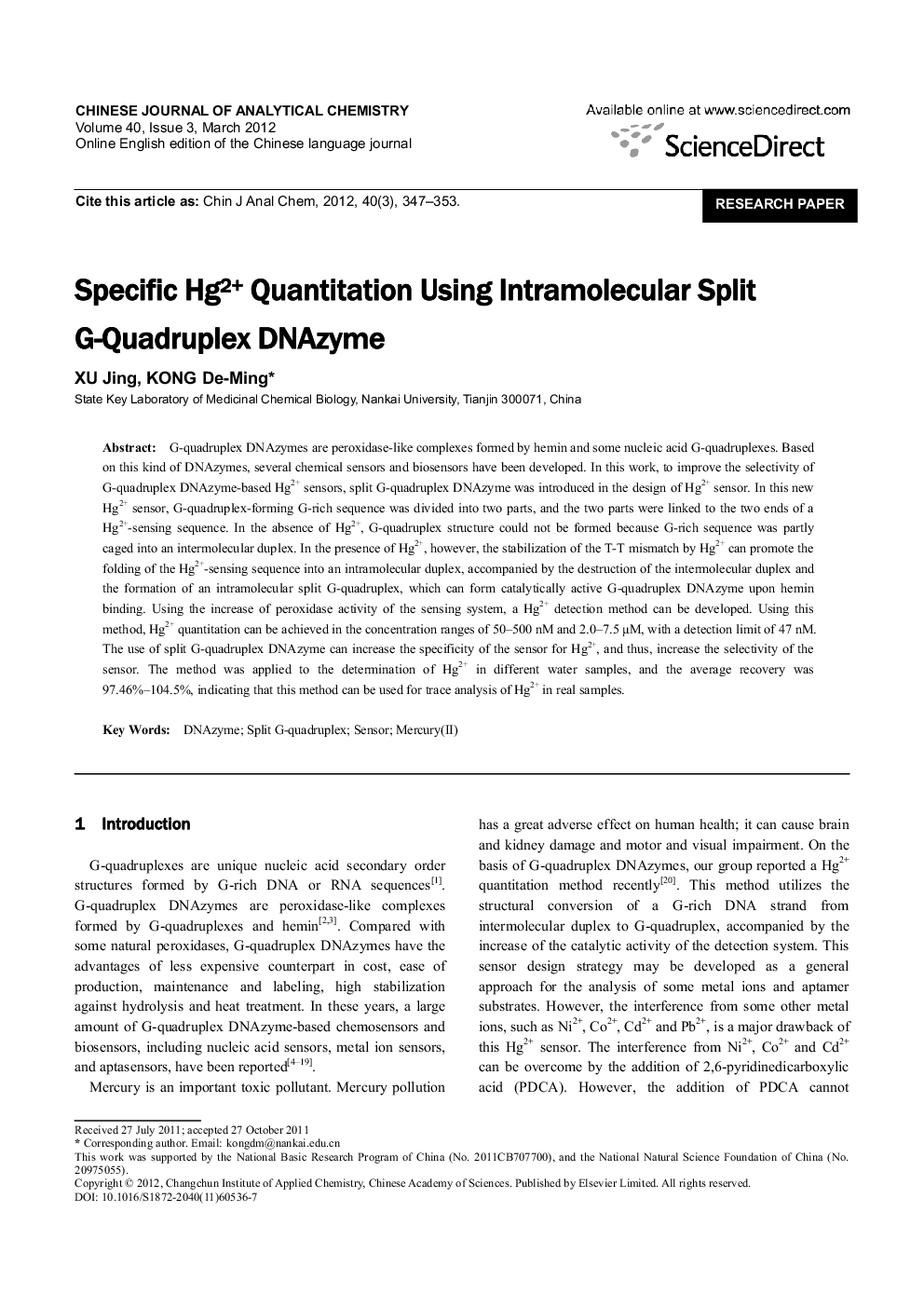| کد مقاله | کد نشریه | سال انتشار | مقاله انگلیسی | نسخه تمام متن |
|---|---|---|---|---|
| 1182349 | 1491663 | 2012 | 7 صفحه PDF | دانلود رایگان |

G-quadruplex DNAzymes are peroxidase-like complexes formed by hemin and some nucleic acid G-quadruplexes. Based on this kind of DNAzymes, several chemical sensors and biosensors have been developed. In this work, to improve the selectivity of G-quadruplex DNAzyme-based Hg2+ sensors, split G-quadruplex DNAzyme was introduced in the design of Hg2+ sensor. In this new Hg2+ sensor, G-quadruplex-forming G-rich sequence was divided into two parts, and the two parts were linked to the two ends of a Hg2+ -sensing sequence. In the absence of Hg2+, G-quadruplex structure could not be formed because G-rich sequence was partly caged into an intermolecular duplex. In the presence of Hg2+, however, the stabilization of the T-T mismatch by Hg2+ can promote the folding of the Hg2+ -sensing sequence into an intramolecular duplex, accompanied by the destruction of the intermolecular duplex and the formation of an intramolecular split G-quadruplex, which can form catalytically active G-quadruplex DNAzyme upon hemin binding. Using the increase of peroxidase activity of the sensing system, a Hg2+ detection method can be developed. Using this method, Hg2+ quantitation can be achieved in the concentration ranges of 50–500 nM and 2.0–7.5 ìM, with a detection limit of 47 nM. The use of split G-quadruplex DNAzyme can increase the specificity of the sensor for Hg2+, and thus, increase the selectivity of the sensor. The method was applied to the determination of Hg2+ in different water samples, and the average recovery was 97.46%–104.5%, indicating that this method can be used for trace analysis of Hg2+ in real samples.
Journal: Chinese Journal of Analytical Chemistry - Volume 40, Issue 3, March 2012, Pages 347-353